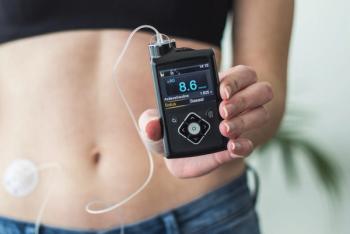
- Drug Topics March 2020
- Volume 164
- Issue 3
Addressing the ‘Glut’ of Pharmacists
It’s my hope that 2020 is a profession changing year, starting with the schools of pharmacy.
Back in the late 1980s, the pharmacy profession gave so much away. We gave up reasonable dispensing fees in the name of increasing volume.
We had computers; we could do more with less. We didn’t have to fill out those 3-part carbon copy claim forms with a pen, as our computers could print those out for us to mail in. Then Prescription Card Services (PCS) had us install those electronic terminals in our pharmacy, we didn’t have any paper to deal with. We then got our computers to interface directly with those insurance companies. At that time, one of my most quotable pharmacists Dick Treese said, “Once you leave those black boxes (modems) into your store, you will kiss your profession goodbye!”
Pharmacists got bamboozled for sure. As if the hassles with the insurance companies were not enough, we then got the DUR messages from the Omnibus Budget Reconciliation Act of 1990 (OBRA 90) to assure that prescriptions for covered outpatient drugs are appropriate, medically necessary, and not likely to result in adverse reactions. We had to review (at no charge!) all of these messages and call physician offices if necessary. No problem, however, lots of jobs were available and salaries increased by leaps and bounds. My starting salary of $12.35 per hour in 1981 had tripled in less than 20 years.
Salaries like that attract interest in high school kids looking for a financially rewarding career. Universities answered the demand by creating more slots for these students. In 1981 when I graduated there were 72 schools of pharmacy, 40 years later there are 143 schools. Now I’m seeing job offers for new graduates about 2/3 of my current salary. Tuition is at least 17 to 20 times higher than when I graduated pharmacy school. Minimum wage midway through pharmacy school in 1978 was $2.65 per hour. A student would need to earn $52 per hour doing a minimum wage job to keep up with college pharmacy school inflation. Don’t forget to add an extra year of tuition for the PharmD program. We’ve sold out this profession to the pharmacy schools.
It’s my hope that 2020 is a profession changing year, starting with the schools of pharmacy. The average family size in my baby boomer generation was 3.67. Today’s family size is 1.9, nearly half of the family size when I was growing up. Half of the available kids as when I was growing up, with twice as many pharmacy school, has resulted in lower overall quality of graduating pharmacists. We need to be graduating a lot less student pharmacists. Wages have indeed stabilized, and I’m sure by the time I hang up my white lab coat, they will further decline. Again, we’ll be haggling about the price of the pharmacist.
Let’s take a clue from our fellow health care professionals: the physicians and dentists. We need to fix the “glut” of pharmacists. By selling out this profession, we will see a further depression in wages and benefits. We will also see an increase in the misery in the profession, by reduction in staffing, more responsibilities, and decreased job satisfaction.
I love this profession; I am so appreciative of the excellent academians that trained me and those training the future generation of pharmacists. Although there is a “glut” of pharmacists, there will never be an excess of excellent pharmacists that come from excellent schools of pharmacy. We need to stop the deluge of pharmacists who will never see the job satisfaction that I’ve seen throughout my career. We need to keep our excellent schools of pharmacy producing those excellent pharmacists.
Articles in this issue
over 5 years ago
Preparing for Evolving Pharmacist Rolesover 5 years ago
NASH Drug Pipeline Shows Promiseover 5 years ago
Why Did You Become A Pharmacist?over 5 years ago
7 Pharmacist-Friendly Apps You Should Be Usingover 5 years ago
Growing Your Business With Supplementsover 5 years ago
Prepare for Allergy Seasonover 5 years ago
Making A Career Pivotover 5 years ago
Ubrogepant: A Novel Drug Mechanism for Migraine Treatmentover 5 years ago
What Pharmacists Should Know About Multiple Sclerosisover 5 years ago
Going Beyond Dispensing: The Future of Pharmacist RolesNewsletter
Pharmacy practice is always changing. Stay ahead of the curve with the Drug Topics newsletter and get the latest drug information, industry trends, and patient care tips.




































































































































